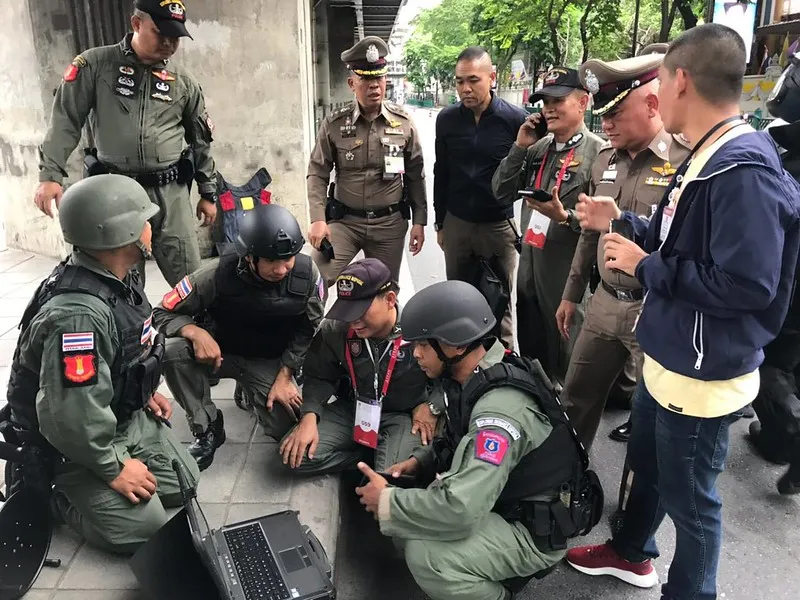
NGOCSTIP – Southeast Asia is a hotspot for human trafficking, with millions of individuals being exploited annually. Human trafficking affects men, women, and children from vulnerable communities across the region. The complex network of traffickers and corrupt officials contributes to this ongoing crisis. Economic inequality, lack of education, and political instability all make individuals in Southeast Asia easy targets for exploitation.
A primary factor that drives human trafficking in Southeast Asia is poverty. Many countries in the region have high poverty rates, with millions struggling to meet basic needs. In rural areas, where jobs are limited, people are often desperate for work opportunities. Traffickers prey on this vulnerability by offering false promises of better jobs and a brighter future abroad. Once victims are trapped, they are forced into labor or sexual exploitation, often facing brutal conditions.
“Read about: Hundreds of Foreigners Rescued from Myanmar’s Scam Centers”
In many Southeast Asian countries, corruption within law enforcement and government systems makes it difficult to combat human trafficking. Some officials turn a blind eye to the problem or actively engage in trafficking rings. Weak legal frameworks and a lack of law enforcement resources further complicate the issue. As a result, traffickers can operate with relative impunity, knowing that they are unlikely to face serious repercussions for their actions. This lack of accountability only perpetuates the cycle of trafficking in the region.
In some Southeast Asian cultures, gender inequality plays a significant role in making women and girls more vulnerable to trafficking. Patriarchal norms often lead to the marginalization of women, leaving them with limited opportunities for education and employment. These societal factors make women easy targets for traffickers who exploit their lack of options. In addition, cultural attitudes toward migration often encourage individuals to seek work abroad, which leaves them vulnerable to exploitation. Traffickers take advantage of this desire for a better life by offering false promises, further increasing the risk of human trafficking. As a result, many individuals are lured into dangerous situations, unaware of the exploitation that awaits them. This cultural factor, combined with the lack of awareness and legal protection, makes it easier for traffickers to manipulate potential victims into harmful situations.
Southeast Asia is home to many countries with large migrant labor populations, such as Thailand, Malaysia, and Singapore. Traffickers often recruit migrants from countries like Cambodia, Myanmar, and Indonesia for low-paying jobs in construction, agriculture, and domestic work. Traffickers take advantage of the fact that these migrant workers are often unfamiliar with their new environments and vulnerable to exploitation. Many end up working in conditions that resemble modern-day slavery, with little to no rights or protection.
“Read more: Monitoring Children’s Digital Activities and Education with Tablets”
With the rise of the internet, traffickers have found new ways to exploit vulnerable individuals through online platforms. Cyber trafficking has become a growing issue in Southeast Asia, with criminals using social media, online job boards, and dating apps to recruit victims. Traffickers specifically target young people, especially those from low-income backgrounds, as they are more vulnerable to manipulation. By exploiting their lack of resources and opportunities, traffickers lure them into exploitative situations with promises of a better life or financial stability. These individuals, often seeking a way out of poverty, find themselves trapped in forced labor or sexual exploitation. Traffickers often recruit migrants from countries like Cambodia, Myanmar, and Indonesia for low-paying jobs in construction, agriculture, and domestic work.
While the situation remains dire, various efforts have been made by governments and NGOs to combat human trafficking in Southeast Asia. For instance, countries like Thailand, Indonesia, and the Philippines have passed stronger anti-trafficking laws and have also increased awareness campaigns. Furthermore, regional organizations such as the Association of Southeast Asian Nations (ASEAN) are actively working together to improve cooperation and address human trafficking at the international level. In addition to these measures, governments have increased cross-border collaborations to strengthen enforcement and prosecution. However, despite these initiatives, corruption and a lack of resources often hinder the effectiveness of these efforts, making it difficult to fully combat the issue.
Moreover, beyond these institutional challenges, traffickers continue to exploit vulnerable individuals, often deceiving them with promises of online work or relationships. In fact, this deceptive tactic has become one of the most common ways traffickers lure victims. Unfortunately, once the victims fall for these promises, they find themselves trapped in forced labor or sexual exploitation. As a result, their sense of hope and security quickly evaporates. Consequently, the path to recovery for many victims becomes even more difficult as they face manipulation and intimidation from traffickers.
As if that weren’t enough, many victims face additional hurdles once they attempt to escape their traffickers, such as a lack of legal or financial support. This makes the process of seeking help more complex and discouraging. Therefore, while steps are being taken to address the issue, the reality remains that much more needs to be done to eradicate human trafficking in Southeast Asia. In conclusion, although progress has been made in recent years, it is clear that the region faces persistent and significant challenges that require a coordinated and sustained effort from both governments and civil society.
Raising awareness and providing education about human trafficking is essential in reducing its prevalence in Southeast Asia. Many people are unaware of the dangers of trafficking and the signs to look out for. Educational programs targeting vulnerable populations can help individuals make more informed decisions about migration and employment. Empowering communities with knowledge is crucial in breaking the cycle of trafficking.